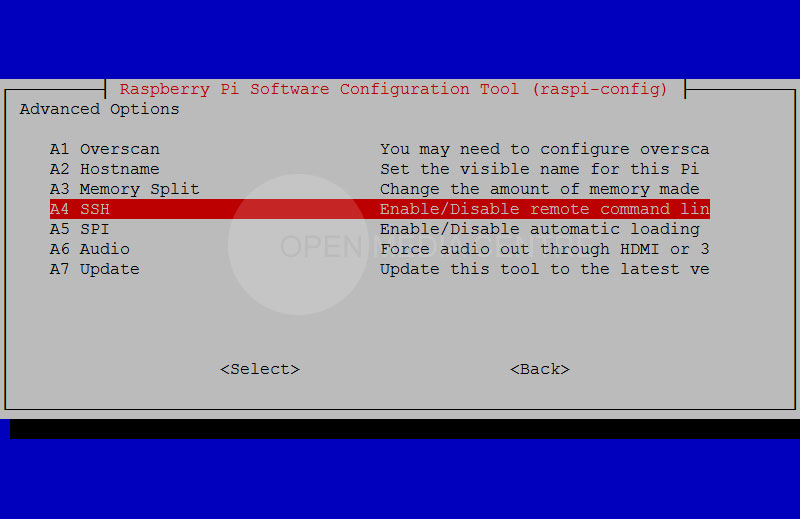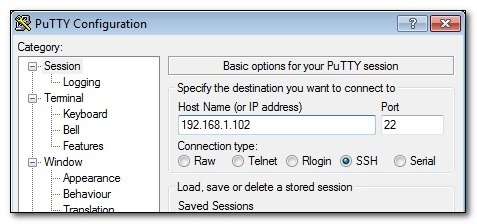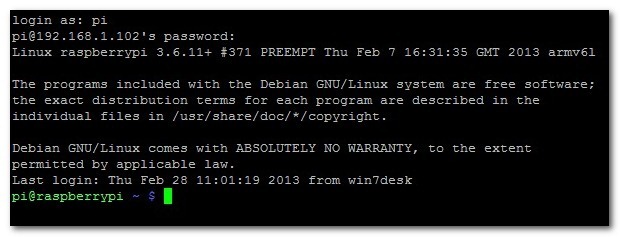In our last post, we wrote a step-by-step walkthrough of how to successfully setup your Raspbian Operating System for the first-time boot of your Raspberry Pi 2. Now we are going to show you how to configure remote access to your Pi. The reason for this configuration is simple: you want to avoid the extra hardware (monitor, mouse, keyboard, etc.) that comes with most computers. Setting up remote access will allow you to configure and tinker with your Pi’s setup, all from the convenience of your laptop or desktop computer (As long as your Pi is on the same network). Check out the first part of this series: Building the Pi
Configuring Secure Shell Access SSH (Command-Line)
The best and easiest way to administer your Raspberry Pi is via the command-line interface using a terminal connection over secure shell access (SSH). Using an SSH client like PuTTY for Windows or the default Macintosh app Terminal, you can connect to your Pi and send commands to it just as if you were typing commands via the Pi’s directly-connected USB keyboard. To enable secure shell access to login to your Pi, you will need to run the following command:
./raspi-config
This will launch the raspi-config utility on your Pi. Once the raspi-config is launched, do the following:

Turn on Secure Shell Remote Access
Go down to “Advanced Options,” choose “SSH” on the next screen, and select “Yes” to enable. This will authorize Secure Shell remote terminal access, allowing you to connect to your Pi from any other computer on the same network. Select “Finish” on the Main Menu and your Pi will reboot with the updated configuration.
Accessing the Pi Using SSH – Windows
Now that you have enabled Secure Shell remote access, you’ll need to launch an SSH client on your desktop to test the remote access and ensure it is working correctly. If you are running Windows, you are going to need to install PuTTY. Once you open a copy of PuTTY, make sure you have the “Session” category selected on the left. Input your Raspberry Pi’s IP address (You can get this via your router’s DHCP table or by running ifconfig on your Pi), select the SSH connection type, and connect.

You may be asked if you want to connect to your Pi, click “Yes.” If you are successfully connected, you will see a terminal window like the one below, prompting you for your Pi’s username and password. You will login with the username ‘pi’ and password ‘raspberry’ (Unless you changed it using ./raspi-config). After you have successfully logged-in you will see something like this:

Accessing the Pi Using SSH – Macintosh
Now that you have enabled Secure Shell remote access, you’ll need to launch an SSH client on your desktop to test the remote access and ensure it is working correctly. If you are a Mac user, you can connect to your Pi via SSH using the native Terminal utility included in your Mac’s Applications >> Utilities folder. To start a connection, launch the Terminal app and then type the following:
ssh pi@192.168.0.100
where 192.168.0.100 should be replaced with your Pi’s actual IP address.
Next, you will be asked if you would like to connect to your Pi, type “Yes.” After that, you will be prompted for your Pi’s login information. From this point, you can issue commands directly to the Pi without the need to connect a monitor or keyboard to it ever again.
In the next installment of our How-to Build a Low-Budget Downloading Machine series, we will walkthrough setting up physical storage devices on your Pi to store your Usenet downloads.
Not a UsenetServer user?
Sign up for our special monthly or annual unlimited plans to save big and get Usenet on the cheap.
Hi when’s the next installment? My RPi 2 is ready to go just need to programs then I can get to downloading ?
Check out our post here on how to install sabNZBd and get started downloading 🙂